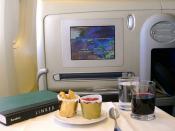Following on from the study carried out by Schaffer and Emerson (1964) on the phases of development in attachment, Ainsworth et al (1978) investigated individual differences in attachment using the Strange Situation. They hoped that their method of assessing attachments would be a reliable and valid measure of attachments. The Strange Situation test lasted approximately 21 minutes and involved the observation of an American infant (12 to 18 months) in a controlled observation room. The procedure consisted of 7 episodes each lasting 3 minutes, depending on the reaction of the infant. The first episode involved the infant exploring the room in the presence of the caregiver. A stranger then enters the room, followed by the discreet departure of the caregiver. The stranger responds to the infant as appropriate. After 3 minutes the infant is reunited with the caregiver. After the infant has been comforted and settled into play again the infant is left alone for 3 minutes.
The stranger enters again and interacts with the infant. Finally the caregiver returns and greets the infant, the stranger leaves. The security or insecurity of the attachment relationship was assessed by the recording of key behaviours during the experiment. The infant's willingness to explore in the presence of the caregiver and his or her reaction to the entrance of the stranger whilst the caregiver is in the room shows whether the infant is able to use the caregiver as a safe base. The level of stranger anxiety is measured by observing the emotional response of the infant being left alone with the stranger and separation protest from the caregiver is assessed when the caregiver leaves. The reaction to reunion with the caregiver on her return is carefully observed in episodes 5 and 8.
From the Strange Situation, Ainsworth et al developed three...


